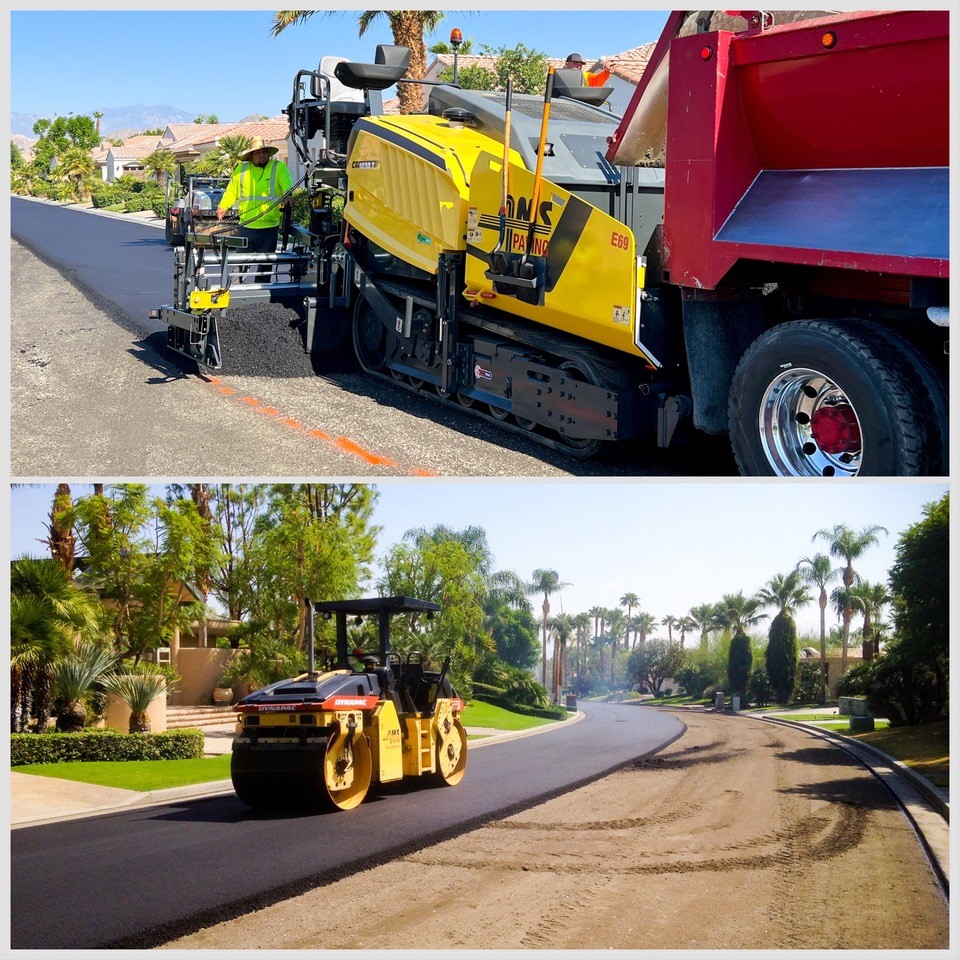
Have you ever wondered how those rough and bumpy “roads” transform into smooth and sleek surfaces? It’s all thanks to the magic of asphalt paving. Let’s take a journey behind the scenes of this type of construction and learn (in layman’s terms) how asphalt paving is completed.
Preparing the Surface
The first step in the asphalt paving process is preparing the ground. This involves clearing the area of any debris, rocks, and vegetation. The goal is to create a clean and even surface for the new road. If there is an existing road, depending on its condition and your end goals, it may need to be removed entirely for replacement or have the top couple of inches removed for an overlay.
Grading and Base Preparation
Next, our crew will grade and prepare the base. This means leveling the ground and ensuring proper drainage. Depending on the base conditions, we use heavy machinery like skip loaders and skid steers to remove large rocks, debris, or old asphalt, and blades to achieve the right slope and elevation, allowing water to flow away from the road’s surface. If the soil is too loose and needs compaction, we’ll send a roller out to smooth out and condense the surface.
Adding Sub-base and Aggregate
To create a stable foundation, sometimes a layer of sub-base material is added. This material, often composed of crushed stone or gravel, is compacted to provide support for the asphalt layer above it. A properly prepared sub-base is crucial to prevent cracks and unevenness in the road. We often grind the existing asphalt on site and use some of those grindings as excellent base material. This not only saves money for our customers by reducing or eliminating the cost of base material needing to be purchased, but also by reducing dump fees for the removed asphalt.
Installing the Asphalt
The asphalt you drive on every day is a mixture of asphalt cement and aggregate materials, like sand and crushed stone. The raw asphalt material is heated to over 300°F to make it malleable and then applied to the prepared base using our heavy pavers. The paver spreads the hot asphalt evenly across the road’s surface at a specified width and thickness.
Compaction
Once the asphalt is in place, it needs to be compacted to ensure a smooth and sturdy road. Compaction is done using a roller, which compresses the asphalt and removes air voids. We use different sized rollers for different sized jobs in order to achieve our goal of over 95% compaction. This step is crucial for the road’s safety, durability, and longevity.
Curing and Cooling
After the asphalt is installed and compacted, the road needs time to cool and harden. This is a crucial part of the process to ensure the asphalt reaches its desired strength. Traffic should be kept off the new pavement until it is cool as the full curing process can take the entire first year! The curing time varies due to asphalt thickness, ambient temperature, asphalt mix, and amount of sun exposure.
Striping and Finishing Touches
Once the asphalt has cooled and hardened, striping, such as lane lines and crosswalks, is added. The finishing touches also include installing any necessary signs or wheel stops.
In a nutshell, asphalt paving is the art and science of transforming rough ground into smooth, drivable roads. It involves meticulous planning, careful preparation, and skilled execution. The result? A safe, durable, and aesthetically pleasing road that you’ll enjoy for a couple decades. The next time you drive on a newly paved road, you’ll have a better understanding of the complex process that went into creating it.
